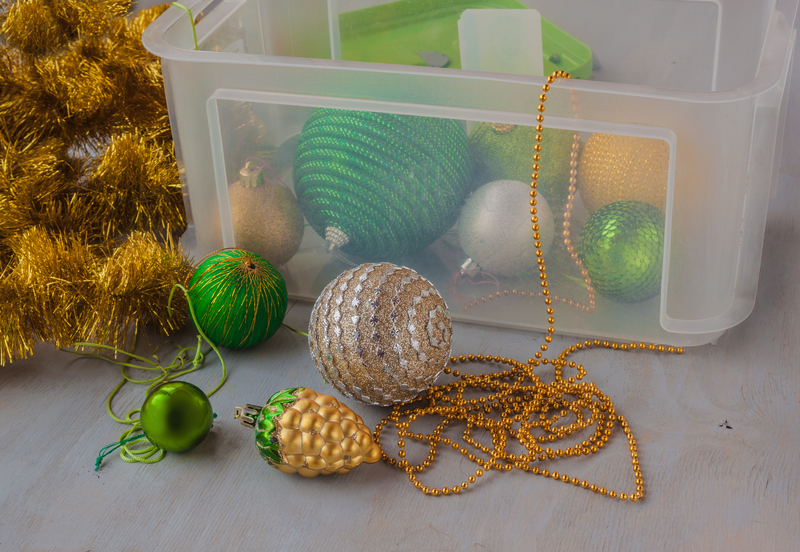Save Your Back and Your Piano: The Case Against Moving It Yourself
The allure of saving a few dollars by moving your own piano is undeniable. After all, it's just a piece of furniture, right? Wrong! If you've ever tried to move a piano--or even considered it--you'll know it's a task that demands not just strength, but also expertise, specialized equipment, and a thorough understanding of both safety and technique. In this comprehensive guide, we'll explore why you should think twice before attempting to move your piano yourself, and why leaving it to the professionals is a decision you'll never regret.
Understanding the Gravity: Why Moving a Piano Is Different
Pianos are not like ordinary furniture. They are complex, delicate instruments composed of thousands of moving parts, fine wood, wires under immense tension, and intricate mechanisms. A single slip could not only damage the instrument but also put your health--and even your life--at risk.
What Makes a Piano So Difficult to Move?
- Weight: Upright pianos typically weigh 300-600 pounds; grand pianos can tip the scale at over 1,000 pounds.
- Shape and Size: Unlike a couch or bookshelf, a piano's weight is unevenly distributed, making it awkward to lift.
- Delicate Construction: The inner workings, strings, and soundboard are susceptible to bumps and shocks.
- Risk of Personal Injury: Lifting feats, tight turns, stairs, and unexpected shifts can lead to serious back, wrist, and even foot injuries.

Risks of Moving a Piano by Yourself
If you're thinking, "How hard can it really be?"--you're not alone. Every year, countless piano owners attempt self-moves, only to suffer costly damages and painful injuries. Here's what can go wrong:
1. Injury to Yourself and Others
- Back, neck, and muscle strains: The number one risk. One awkward lift can result in weeks or even months of pain.
- Crushed fingers and toes: Mishandling those heavy corners can lead to broken bones.
- Slips, trips, and falls: Stairs and uneven surfaces dramatically heighten the danger.
- Hernias: Lifting and carrying significant weight without proper technique can cause lasting injury.
2. Damage to Your Piano
- Soundboard cracks: The heart of your piano can fail from a minor jolt.
- Tuning instability: Even the gentlest bump can throw a piano out of tune.
- Broken legs or pedals: Underestimate the weight, and vital functions might snap under stress.
- Scratches, dents, and chipped finish: Cosmetic damage can cost a small fortune to repair.
3. Damage to Property
- Dented walls and doorways: It's easy to misjudge spatial clearance, especially in tight hallways.
- Scratched or cracked flooring: Pianos can gouge hardwood, tear carpet, or chip tiles in a slip.
- Structural damage: Losing control of a piano on stairs can lead to even more catastrophic effects.
The Complex Anatomy of a Piano
Before dismissing the difficulty, consider what actually goes into a piano. Upright and grand pianos are engineering marvels with intricate construction:
Key Components to Protect
- Soundboard: Sensitive and expensive to repair.
- Action: The mechanism translating your keystrokes into sound.
- Strings and pins: Held under massive tension; sudden shocks can cause breakage.
- Pedals and wheels: Easily damaged if the piano is dragged or mishandled.
A seemingly minor accident can lead to irreparable damage. Professional piano movers spend years learning how to preserve these components throughout the move.
The Specialized Tools of Professional Piano Movers
Successful piano relocations demand more than muscle. They require:
- Piano dollies: Specially designed to support piano weight and navigate tight quarters.
- Heavy-duty straps and harnesses: Distribute the load for safer handling.
- Padding and blankets: Protect the finish from bumps and scrapes.
- Ramps and sliders: Essential for stairs and thresholds.
Most households do not have this equipment on hand. Improvised solutions like bedsheets, planks, or regular dollies often end in major accidents.
The Financial Realities: Saving Money Isn't Always Saving
The initial appeal of saving money by moving a piano yourself can backfire quickly with repair and medical bills. Let's break down the costs:
Potential Expenses to Consider
- Professional repair: Fixing a soundboard or leg can easily exceed the price of professional moving.
- Medical bills: Injuries from heavy lifting are rarely covered by homeowners insurance.
- Tuning and restoration: Most moves require professional tuning afterwards; a botched move will need more extensive work.
- Damage to home: Minor wall or floor repairs can run into hundreds or thousands of dollars.
Insurance Issues
Most standard homeowners insurance does not cover accidental damage during a self-move. Professional piano moving companies, on the other hand, are fully insured for every step of the process.
The Hidden Value of Professional Piano Movers
Hiring experts means more than just moving your instrument from one place to another. It's about preserving your investment and your well-being.
The Benefits of Using Professional Piano Moving Services
- Expert assessment: Movers will survey the path, plan for tricky corners, and protect the instrument at every stage.
- Skillful disassembly/reassembly: Grand pianos need legs and pedals removed for safe movement. Movers handle this routine with precision.
- Efficient packing: Experienced teams wrap, secure, and transport using proven techniques tailored to each piano type.
- Liability protection: If something does go wrong, professional insurance covers both your property and your piano.
- Time savings: An experienced crew can move and set up far faster (and with less stress!) than a group of amateurs.
Testimonials from Satisfied Customers
"I thought moving my piano would save a little money, but after seeing what goes into it, I'm so glad I called the pros. Worth every penny!" - Sarah H., New York
"The team took less than two hours, were courteous and efficient, and my grand piano arrived perfectly in tune. Highly recommended." - Mark P., Chicago
When DIY Might (Rarely) Be an Option
There are very limited scenarios in which moving a piano yourself could be feasible:
- Small, keyboard-style digital pianos: These weigh much less and are designed for portability.
- Short, obstacle-free moves: For example, rolling an upright a few feet within the same room.
- More than enough strong helpers: Even then, risk remains, and proper tools are still vital.
But for most acoustic uprights and nearly all grands, the risks far outweigh the rewards.
How to Choose the Right Piano Moving Professionals
If you agree that professional help is the wise choice, here's what to look for:
Key Questions to Ask Prospective Piano Movers
- Are you fully insured and licensed? Get documentation if you can.
- How much experience do you have with pianos specifically? Not all movers are piano specialists.
- What equipment do you use? Professional-grade dollies and straps are essential.
- Can you provide recent references? Satisfied past customers are a good sign.
- Do you offer written estimates? Transparent pricing prevents surprises.
The Cost of Professional Piano Moving
While every move is unique, average costs typically range from $150-$500 for uprights, and $400-$1,000 for grands, depending on factors such as stairs, distance, and complexity.
Compare those numbers to the potential repair and medical costs of a DIY disaster!

Frequently Asked Questions: Piano Moving Edition
What if I just need to move my piano across the room?
Even short moves can cause damage or injury. Use quality casters if available, clear the path, and avoid pivoting sharply. For grand pianos, always consult an expert.
Can I put a piano on its side to fit through a doorway?
No! Never tip a piano on its side unless you know what you're doing. Professional movers disassemble and reassemble as needed.
Will my piano need tuning after moving?
Yes--almost every move requires professional tuning as vibrations and shocks can affect string tension.
Do piano movers handle stairs and elevators?
Absolutely. Professional piano moving companies routinely navigate stairs, elevators, and tight turns--safely.
Save Your Back and Your Piano--Leave It to the Professionals
To sum up: Moving your own piano isn't just a physical challenge; it's a gamble with a priceless instrument, your health, and your home. Every year, people try--and regret--DIY piano moves, facing expensive damage, painful injuries, and unpredictable liabilities.
Don't risk your treasured piano or your well-being. Hire experienced, insured movers and enjoy peace of mind--along with beautiful music--in your new space!